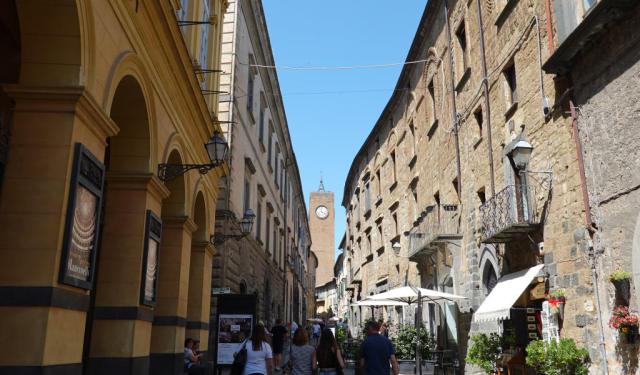
Palace of the Captain of the People, Orvieto
Palazzo del Capitano del Popolo is a historic palace with a rich history dating back to the end of the 13th century. It was originally constructed to serve as the institutional seat of the Capitano del Popolo, a prominent figure during that era in Italy and various other municipalities. The Capitano del Popolo held a significant representative role, representing the interests of the common people.
This palace, situated in the vibrant Piazza del Popolo, has always been closely intertwined with the local community and its social and economic dynamics. Piazza del Popolo continues to be a hub for community activity and hosts the town market to this day.
The Palazzo del Capitano del Popolo features a striking architectural design, including a loggia with porticoes. One of its most magnificent spaces is the Sala dei Quattrocento, a room of great historical and artistic significance.
Below ground, the palace houses an extraordinary archaeological treasure: the Etruscan foundations adorned with the engraved letter "A" on the stone blocks, providing a tangible link to the region's ancient past.
Today, the Palazzo serves as a congress center, playing host to a wide range of events and exhibitions. It has a total capacity for up to 699 people across three distinct rooms: the evocative Sala dei Quattrocento, the Expo Hall, and the Etruscan Hall.
Each year, the historical Corpus Domini procession in Orvieto commences from this location, further highlighting the enduring historical and cultural significance of Palazzo del Capitano del Popolo within the community.
This palace, situated in the vibrant Piazza del Popolo, has always been closely intertwined with the local community and its social and economic dynamics. Piazza del Popolo continues to be a hub for community activity and hosts the town market to this day.
The Palazzo del Capitano del Popolo features a striking architectural design, including a loggia with porticoes. One of its most magnificent spaces is the Sala dei Quattrocento, a room of great historical and artistic significance.
Below ground, the palace houses an extraordinary archaeological treasure: the Etruscan foundations adorned with the engraved letter "A" on the stone blocks, providing a tangible link to the region's ancient past.
Today, the Palazzo serves as a congress center, playing host to a wide range of events and exhibitions. It has a total capacity for up to 699 people across three distinct rooms: the evocative Sala dei Quattrocento, the Expo Hall, and the Etruscan Hall.
Each year, the historical Corpus Domini procession in Orvieto commences from this location, further highlighting the enduring historical and cultural significance of Palazzo del Capitano del Popolo within the community.
Want to visit this sight? Check out these Self-Guided Walking Tours in Orvieto. Alternatively, you can download the mobile app "GPSmyCity: Walks in 1K+ Cities" from Apple App Store or Google Play Store. The app turns your mobile device to a personal tour guide and it works offline, so no data plan is needed when traveling abroad.
Palace of the Captain of the People on Map
Sight Name: Palace of the Captain of the People
Sight Location: Orvieto, Italy (See walking tours in Orvieto)
Sight Type: Attraction/Landmark
Guide(s) Containing This Sight:
Sight Location: Orvieto, Italy (See walking tours in Orvieto)
Sight Type: Attraction/Landmark
Guide(s) Containing This Sight:
Walking Tours in Orvieto, Italy
Create Your Own Walk in Orvieto
Creating your own self-guided walk in Orvieto is easy and fun. Choose the city attractions that you want to see and a walk route map will be created just for you. You can even set your hotel as the start point of the walk.
Orvieto Introduction Walking Tour
Some 100 kilometers north of Rome, in the picturesque region of Umbria, lies the old town of Orvieto overlooking the Paglia valley from atop a volcanic plateau. The name "Orvieto" stems from “urbs vetus” which means “ancient town” in Latin. Indeed, Orvieto is old, with its roots traced to Etruscan times, circa the 9th century BC.
Despite having been a major center of Etruscan... view more
Tour Duration: 2 Hour(s)
Travel Distance: 3.4 Km or 2.1 Miles
Despite having been a major center of Etruscan... view more
Tour Duration: 2 Hour(s)
Travel Distance: 3.4 Km or 2.1 Miles

